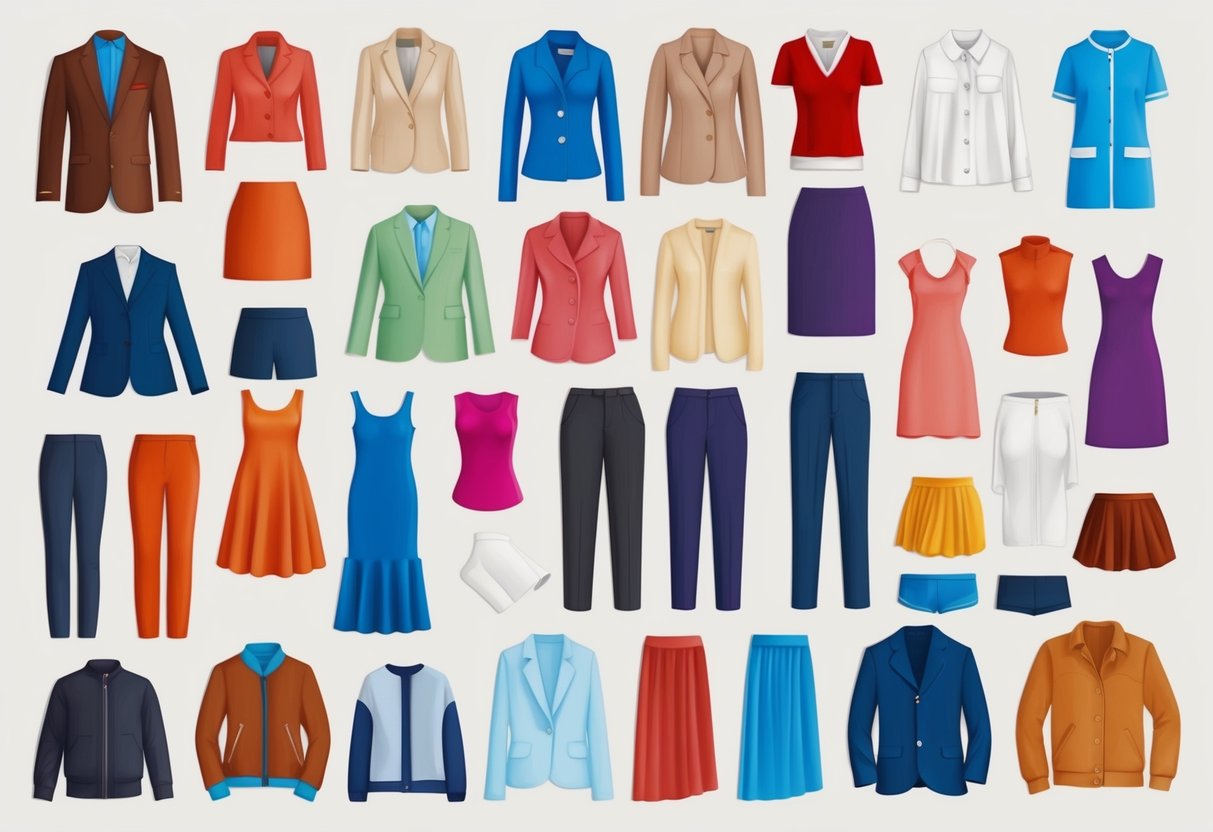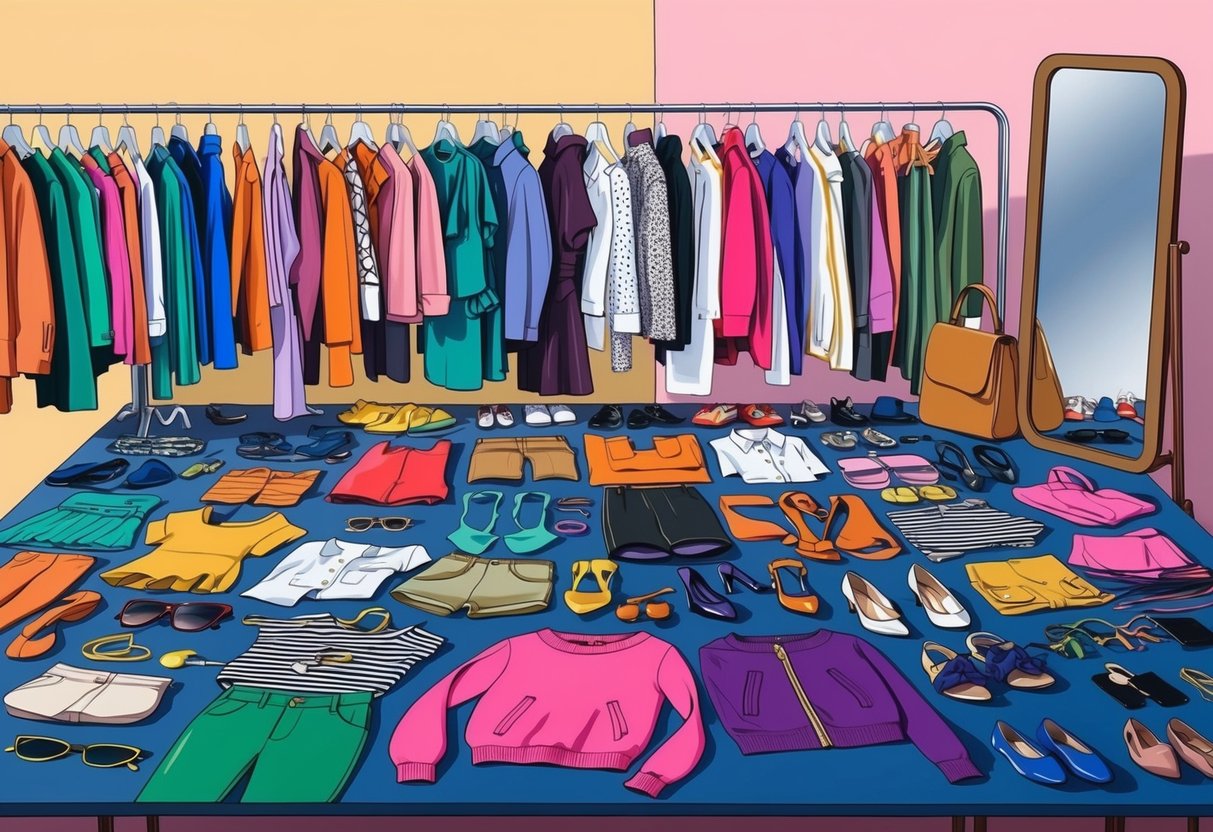
Dressing for Your Body Type and Shape

Personal style is amplified when clothing works in harmony with individual proportions. Understanding body shape helps each person make confident fashion choices that highlight their favorite features and support self-expression.
Identifying Your Body Shape
Body types are typically categorized as apple, pear, rectangle, hourglass, or inverted triangle. Each body shape comes with unique proportions and areas that can be accentuated with the right styles.
Taking simple measurements of the shoulders, bust, waist, and hips is the quickest way to determine your silhouette.
Use the following table to match basic measurements with common body shapes:
| Body Shape | Key Characteristics |
|---|---|
| Apple | Fuller bust, wider midsection |
| Pear | Wider hips, smaller upper body |
| Rectangle | Equal bust/waist/hip measurements |
| Hourglass | Balanced bust/hips, defined waist |
| Inverted Triangle | Broad shoulders, narrow hips |
Recognizing these shapes is essential for finding styles designed to balance and flatter. Stitch Fix offers helpful advice for those looking to find clothes that suit their body type.
Selecting Styles that Flatter Your Figure
Choosing clothing for specific body types allows individuals to highlight their best attributes while feeling comfortable and confident. For instance, wrap dresses, peplum tops, and belted pieces can define waists and enhance hourglass figures.
Those with pear shapes often choose A-line skirts or boat neck tops to balance proportions. Structured blazers and tailored pants suit rectangle shapes, adding feminine curves.
Apple body types may prefer V-necklines and flowy fabrics to draw attention upward. Inverted triangle shapes can benefit from styles that add volume at the hips, like wide-leg pants or gathered skirts.
Adapting style choices to work with rather than against body shape ensures clothing not only fits but flatters and embodies personal style. For more on choosing garments that suit both body type and personal coloring, see advice on curating a signature wardrobe for your unique dimensions.
Navigating Fashion Trends and Embracing Change

Adapting to new looks in the ever-evolving fashion industry can feel challenging. Successful personal style thrives on combining current trends with individual taste, while learning from influential style figures like Anna Wintour.
Staying Current Without Losing Your Identity
Navigating fashion trends requires a balance between experimenting with new influences and maintaining personal authenticity. Curating a wardrobe starts with identifying which trends suit individual body shapes, color palettes, and daily routines.
Select specific elements—such as a popular silhouette or a seasonal color—to integrate without overwhelming your signature style.
Tips for staying current:
- Regularly review fashion magazines or platforms for inspiration.
- Use online resources like Pinterest to gather style ideas.
- Test new looks gradually, pairing trendy pieces with timeless basics.
Avoid pursuing every trend. Choose only those that genuinely align with your personal style values.
For more advice on harmonizing trends and individuality, Closet Cacheté offers practical strategies to define your look effectively.
Icons and Influences: Learning from Anna Wintour
Studying iconic fashion leaders such as Anna Wintour reveals that lasting style comes from knowing one’s aesthetic and remaining adaptable. Wintour’s consistent use of statement pieces—like her signature bob haircut, oversized sunglasses, and structured silhouettes—demonstrates the power of visual trademarks.
Icons like Wintour also embrace change by incorporating modern trends that complement their established image. She does not ignore innovation in the fashion industry but filters it through her distinctive lens, integrating updates that reflect her evolving taste.
Aspiring to a signature look does not mean resisting all changes. Instead, it involves careful selection and adaptation—adopting trends with a clear sense of direction and self-knowledge.
Building Confidence in Your Fashion Choices

Confidence in fashion is shaped by self-awareness, practice, and an understanding of what feels authentic. Turning fashion into a tool for self-expression starts by addressing personal insecurities and using style to actively project individuality and self-assurance.
Overcoming Style Insecurities
Many people struggle with doubts about whether their fashion choices are appropriate, flattering, or trend-conscious enough. The first step is assessing which clothes consistently make them feel comfortable and true to themselves.
Noticing recurring colors, cuts, or brands in their wardrobe can highlight existing strengths and preferences. It helps to write down what they like or dislike about their outfits, then make small adjustments according to these observations.
Creating a style journal, mood board, or even taking photos to track preferred looks can show growth and help clarify personal taste. Seeking feedback from trusted friends can provide reassurance without overwhelming influence.
Regularly wearing their favorite pieces, regardless of current trends, strengthens self-trust. Focusing on how clothes make them feel—rather than just how they appear to others—encourages genuine self-acceptance.
For additional guidance, exploring resources that discuss building a wardrobe around favorite items or signature pieces can offer practical ways to boost confidence, as discussed in guides like those on personal style development.
Using Fashion as a Powerful Tool
Fashion is more than appearance; it’s an effective form of nonverbal communication. Clothing choices send signals about personality, interests, and mood.
People can use fashion strategically to project positivity, assertiveness, or creativity. Experimenting with accessories, layering, and combinations of textures encourages creative risk-taking.
For instance:
| Approach | Example |
|---|---|
| Bold Accessories | Statement necklace, bright scarf |
| Layering | Mixing a blazer with denim |
| Texture Mix | Combining leather and cotton |
Trying new styles in low-pressure situations—like a weekend outing—allows gradual adjustment to bolder choices. Consistently making intentional style decisions builds authentic confidence.
Fashion allows people to own their narrative. By refining their signature style and focusing on how clothing helps them feel empowered, individuals can use style to feel more confident and self-assured.



